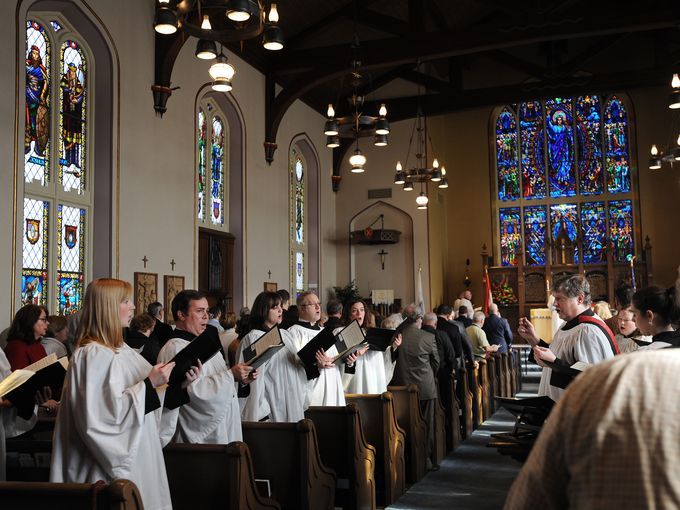This Sunday, the Mariner’s Church in Detroit will once again offer its Great Lakes Memorial service. This annual event honors the memory of the more than 6,000 Great Lakes shipwrecks and the more than 10,000 sailors who have lost their lives in them.
Last month, Mariner’s Church celebrated its 175th anniversary. Mariners’ Church was established in 1842 through the will of Julia Ann Anderson, the widow of John Anderson who served in the War of 1812 and later became Commandant of the Detroit branch of an early version of the U.S. Army Corps of Engineers. Julia’s will provided the funds to establish “the best Mariners church in the world.” Her sister, Charlotte Taylor, also contributed to the effort.
Mrs. Anderson’s bequest was in part a response to the “pew fees” that many churches of the day required. Her church would be both free and non-denominational and therefore serve as a “House of Prayer for All People,” which remains Mariners’ mission to this day.
Mariner’s Church is most famous for its connection to the Edmund Fitzgerald. In November, 1975, the Fitzgerald, then the largest ship on the Great Lakes, set sail from Superior, WI but got caught in a storm with winds over 50 miles per hour, and waves ranging from 18 to 25 feet. In the evening of the 10th of November, the Fitzgerald was in serious trouble 17 miles off Whitefish Point, MI, and by 7:30 the ship had sunk, likely going down bow first in the raging seas. There were no survivors among the 29 crew on board.
In Detroit, Reverend Richard Ingalls, then the pastor of Mariners’ Church came to the church in the cold, dark pre-dawn hours November 12 to commemorate the loss of lives, the worst ever on the Great Lakes, by solemnly ringing the church’s “brotherhood bell” 29 times, an act immortalized in Gordon Lightfoot’s ballad, “The Wreck of the Edmund Fitzgerald.”
Long associated with the Episcopal Church’s diocese of Michigan, the Michigan Court of Appeals ruled in 1992 that it was a separate organization and has operated as an independent church since that time. Today, it maintains close relations with the Anglican Church in North America, mandating that its services be drawn from the 1928 Book of Common Prayer and allowing only the King James Version of the Bible to be read in worship.
Image: The choir opens the Memorial Service in 2015. Photo by Brandy Baker, Detroit News

